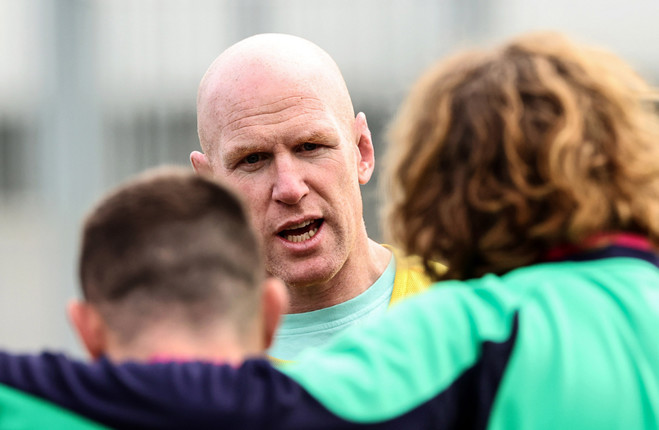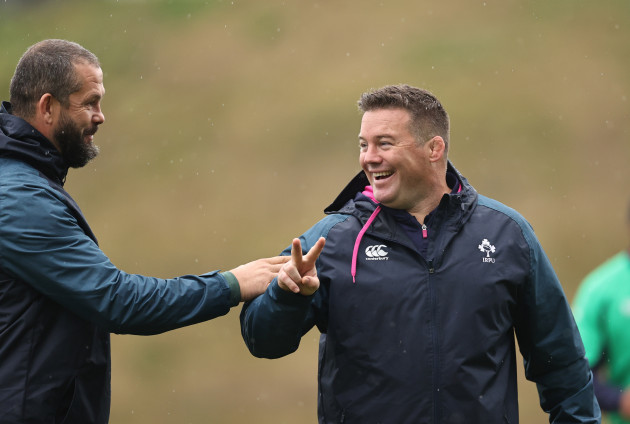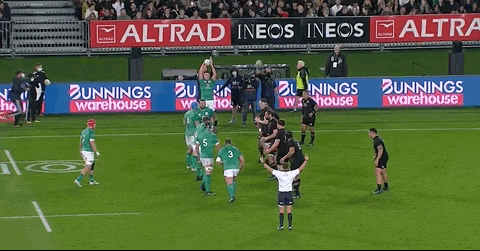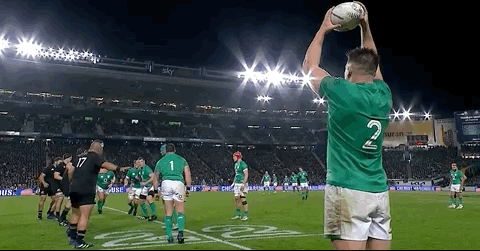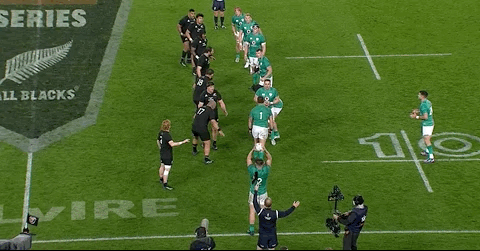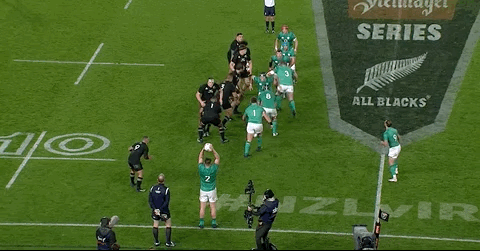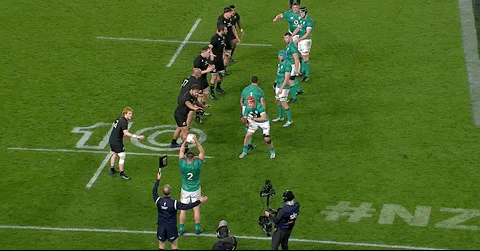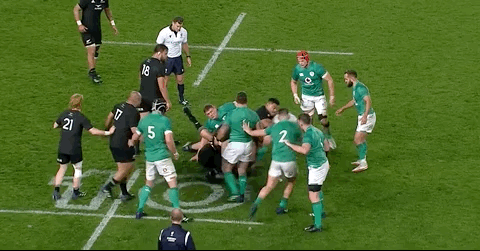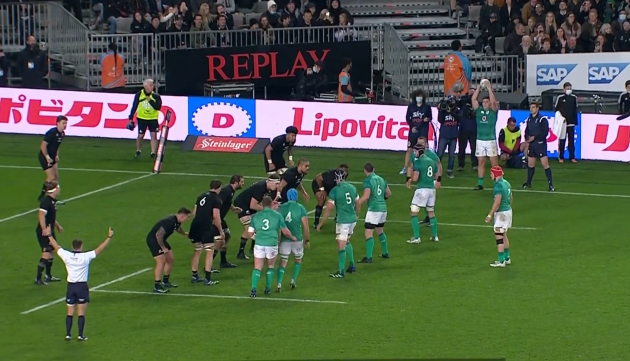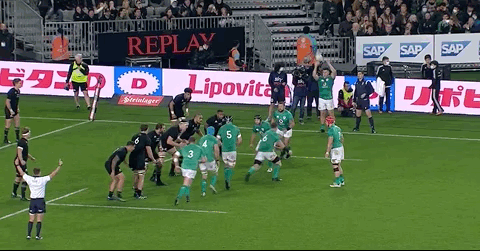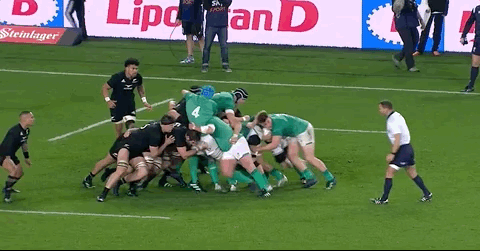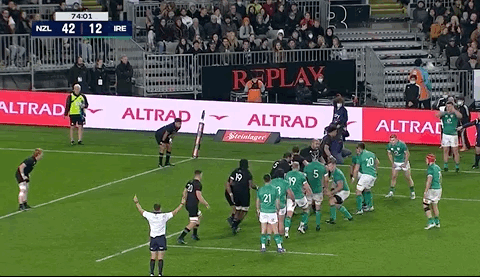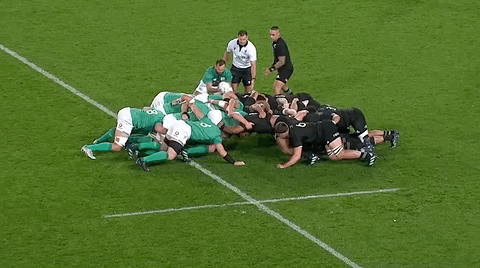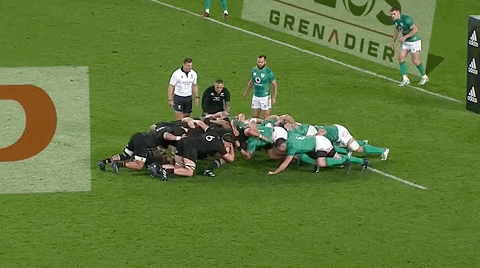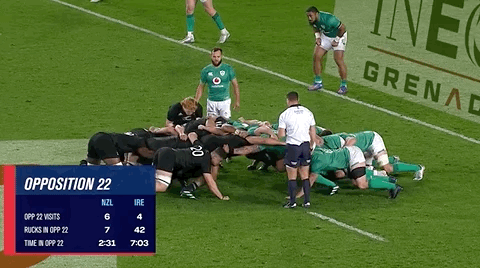THE ROOF OVER Forsyth Barr Stadium in Dunedin should mean a high-tempo and aesthetically pleasing second Test between Ireland and New Zealand tomorrow.
The west end of the venue is known as ‘The Zoo’ and is usually full of the raucous students and party people of Dunedin, so they are likely to get their money’s worth.
And yet, while it should be an exciting and attacking-minded encounter, the battle in the tight is where tomorrow’s encounter will really be decided.
This has been a big week for Paul O’Connell, John Fogarty, and the Irish forwards. Ireland’s pack gave up three scrum penalties, missed some key lineouts, and struggled to get their maul going in the first Test.
They’re determined to be better tomorrow. And they need to be.
One pre-game boost for the Irish pack is New Zealand’s loss of the hugely influential Sam Whitelock to concussion. He runs their lineout, is key in their maul and restarts, and generally brings major nous to the Kiwis’ forward play. He will be missed.
Scott Barrett is a high-quality replacement as he moves from blindside flanker into the second row and Brodie Retallick takes over the lineout calling, but the Kiwis now have far less of a lineout and maul threat in their back row with Dalton Papali’i coming in, even if he brings other strengths away from the set-piece.
The All Blacks had clearly put a major focus on their maul defence ahead of the first Test and they did an excellent job of denying Ireland momentum in that area of the game.
The lineout itself was also an area of woe for Ireland, who lost some crucial possession without even getting back to ground to either maul or strike away from the set-piece.
The official match stats tell us that Ireland had an 82% success rate on their throw but even that figure doesn’t quite do justice to the frustrations they encountered.
Ireland had 17 lineouts in this game but one of those saw a free-kick awarded in their favour before they had even thrown the ball in – the Kiwis punished for closing the gap.
Ireland lost three of their throws directly, the first coming in the 16th minute as they looked to build on their strong start to the game.
The loss here is even more frustrating for the fact that Keith Earls’ opening try originated from a lineout in a virtually identical position, underlining the importance of this set-piece as a launchpad for the Irish attack.
In this instance, Ireland’s timing is marginally off as Dan Sheehan’s throw slips through James Ryan’s fingertips in the split second before he reaches the apex of his jump. Ireland’s attack is denied the chance to apply more pressure on the All Blacks.
There was a very similar lineout loss for Ireland in the 62nd minute with the scoreline still at 35-12 and Ireland having a long-shot chance of making a game of it.
Again, the margins are very fine as Ryan can’t gather Sheehan’s throw to the middle and Ireland miss out on a prime chance to attack in the New Zealand 22.
The All Blacks made an excellent steal in the 73rd minute as the dynamic Pita Gus Sowakula rose to intervene.
Without any movement in the Irish lineout, Ardie Savea and Whitelock make early reads to get into position to lift Sowakula.
This lineout is inside Ireland’s half, but again it means they can’t use a backline strike play to test the Kiwi defence or perhaps exploit backfield space with their kicking game.
These three losses don’t tell the full story of Ireland’s struggles at the lineout, however.
Early in the second half, this time with the score still at 28-12 and Ireland just having scored through Garry Ringrose to grab momentum, the Irish lineout malfunctions.
Ireland go to the tail in this instance and Beirne struggles to just about get a hand to Sheehan’s throw, meaning the ball comes down to ground rather than into Jamison Gibson-Park’s hands. He spills it and Codie Taylor pounces.
This goes down as an Ireland lineout win in the official stats but we can see that it really shouldn’t. The turnover ends with Ireland conceding a penalty through O’Mahony at the breakdown and suddenly the Kiwis are marching on the Irish 22.
Below, we see another Irish lineout ‘win’ in the 63rd minute…
… but Brodie Retallick is all over it and has swarmed onto the ball even before Ireland get back to ground.
He chokes up the Irish mauling effort and the Kiwis get another turnover.
So, in a more realistic sense, Ireland’s lineout success rate was down at 69% in this game.
When they got back to ground successfully, O’Connell’s pack also encountered frustration at the maul as a highly-motivated Kiwi pack denied them go-forward.
Early in the second half, the Irish pack had two close-range lineouts that they would have seen as try-scoring opportunities.
Around eight metres out, the Irish pack would have been backing themselves to have a go at the tryline with their maul from here.
But New Zealand’s defence is excellent in this instance as they opt against jumping and instead stay on the ground to deliver extremely cohesive maul defence.
They actually shift Ireland backwards here in a humbling moment for the Irish forwards – this is a big deal to professional players who take great pride in winning these battles, which are psychological as well as technical, tactical, and athletic.
Ireland eventually get some sideways movement in their maul but Sheehan has to break off as it’s not going forward…
This passage does actually end with Ringrose scoring Ireland’s second try in the left corner but it begins with this maul win for the All Blacks.
Ireland did manage to get a nudge forward in a maul down the left in the 57th minute before playing off it into midfield.
O’Connell’s men were very close to having another lineout stolen with six minutes of the game left as Barrett rose to get a hand to the ball…
… but the Irish maul failed to get going even after that close call and this was one of three further maul stops from the All Blacks in the closing stages of the game.
The Kiwis conceded one penalty for collapsing an Irish maul, but they will have been delighted with their efforts in this area of the first Test. O’Connell and co. will be determined to make a far greater impact with their maul tomorrow.
Of course, Ireland’s set-piece woes were not limited to the lineout and maul.
They had a crucial penalty concession at scrum time in the 14th minute after the All Blacks had given up a free-kick for closing the gap at a lineout on their own 22.
Referee Karl Dickson penalises Ireland loosehead prop Andrew Porter and says, “Number one stepped out under pressure.”
While Ireland had very few of their own scrum feeds, there were two further penalty concessions later in the game on New Zealand’s put-in. In both cases, Dickson penalised Porter on the loosehead side for collapsing.
Porter and Ireland were very unhappy with this penalty decision, which the All Blacks were free-kicked for when they opted to scrum again with this penalty.
Just before the 70th-minute penalty below, Dickson has to reset the scrum and O’Mahony seems to tell the referee, “Every time they lose the hit, the scrum goes down. Every time they win the hit, they don’t stop and throw the ball in.”
Dickson comes across to Ireland’s loosehead side but again the penalty goes against Porter for collapsing.
The All Blacks opt to scrummage again and Sowakula scores off the set-piece, with O’Mahony unhappy about Dickson’s positioning as he breaks off the scrum.
While Ireland clearly had frustrations over Dickson’s interpretation at scrum time, there is no doubting that they were under intense pressure on many occasions.
The issues at scrum time in the first Test follow a concerning Six Nations in this area, with Ireland conceding 13 penalties at the scrum, more than any other team in this year’s championship.
Ireland also won the joint-fewest penalties of any team in the Six Nations this year.
Whatever about their annoyance about interpretation, there is little doubt that Ireland’s scrum is now perceived by opponents and referees as a weakness. Scrum coach Fogarty and his forwards must begin to reverse that trend urgently, beginning tomorrow.
Ireland’s lineout was statistically the most effective in the Six Nations with a 94% success rate and their maul had some positive returns, but last weekend’s outing saw a damaging dip in those areas of the game. Again, O’Connell and his pack will have spent plenty of time this week trying to find solutions.
The set-piece will be pivotal tomorrow as Ireland attempt to make history against the odds.
